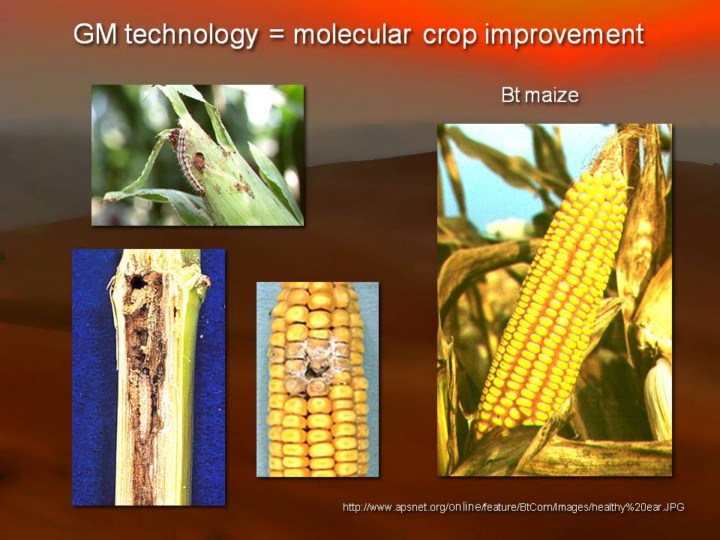 |
The good
news is that over the past half century, we have developed the knowledge and
the technical toolkit to tackle these daunting challenges to expanding food
production in the face of a shifting climate and
a growing population.
The late 20th century witnessed a genetic revolution with the invention of
recombinant DNA technology, the explosion of genome sequencing, and the
development of techniques for the reintroduction of individual genes into
plants and animals. Today, it is possible to use these techniques to modify
crop plants and domestic animals very precisely through adding, removing or
modifying genes to improve their productivity. One of the most familiar
examples is the introduction of a bacterial toxin gene from the soil
bacterium Bacillus thurengiensis into a variety of plants, conferring
resistance to important lepidopteran insect pests. Today only crops altered
by molecular
genetic modification is known as GMOs, as if none of the domestication and
plant breeding that preceded it modified genes.
|
